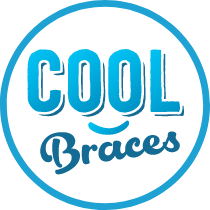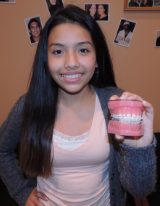Common Orthodontic Issues

We treat one-of-a-kind smiles.
We see these common orthodontic problems in a lot of our new patients. But you’re not like the rest. Your experience, preferences and ultimate goals make your case one-of-a-kind.

Underbite (Malocclusion)
With an underbite, the lower jaw extends further than the upper jaw. This condition can cause facial imbalances, cause pain or difficulty chewing and speaking, and can cause the teeth to wear down prematurely as they don’t meet evenly.
Underbites are often treated with Invisalign® or a form of braces, and in more severe cases, surgical orthodontics.
Open Bite (Malocclusion)
If some of the top teeth don’t meet the bottom teeth when the mouth is closed, either in the back of the mouth or the front, this is called an open bite. (With a healthy alignment, the top teeth overlap the bottom teeth slightly.)
An open bite may be the result of skeletal development problems and/or childhood habits, like thumbsucking and tongue-thrusting. It can be extremely challenging to chew food properly and pronounce certain words with an open bite, and the facial structure is typically affected by this condition.
Some open bite cases may be treated with braces or Invisalign, while others may require surgery. Early orthodontic treatment can be especially effective for treating this condition before it progresses and leads to further challenges.
Protrusion (Malocclusion)
A protrusion, also known as an overjet condition, occurs when the front teeth protrude outward. Commonly called “buck teeth”, an overjet generally results from underdeveloped jaw bones, or thumbsucking.
Early orthodontic treatment is an especially effective and efficient treatment option for protrusions. Depending on the severity of the condition, a full treatment of braces may be used for these cases.

Spacing Issues
Although it’s normal to have some spaces between primary (baby) teeth, excessive gaps or spaces between the teeth can also be caused by a few factors, including excessive space in the mouth, missing teeth congenitally or due to cavities or trauma, as well as childhood habits (like thumbsucking).
Spacing issues are some of the most common orthodontic problems, and are often treatable with braces or Invisalign.
Crowded Teeth
Teeth that are overlapping are considered ‘crowded’. More often than not, crowding is the result of insufficient room in the mouth. When the jaws aren’t wide enough to fit all teeth, the teeth start to overlap each other as they’re emerging.
In some cases, crowded teeth can be treated with a palatal expander appliance during childhood, while the jaws are still developing. In severe cases of crowding, Dr. Tahir will help you make the best treatment decision.


Ready?
Your smile is a work of art. Let’s make you a magnet for life’s opportunities.
All you have to do is start the convo, and we’ll take it from there.






